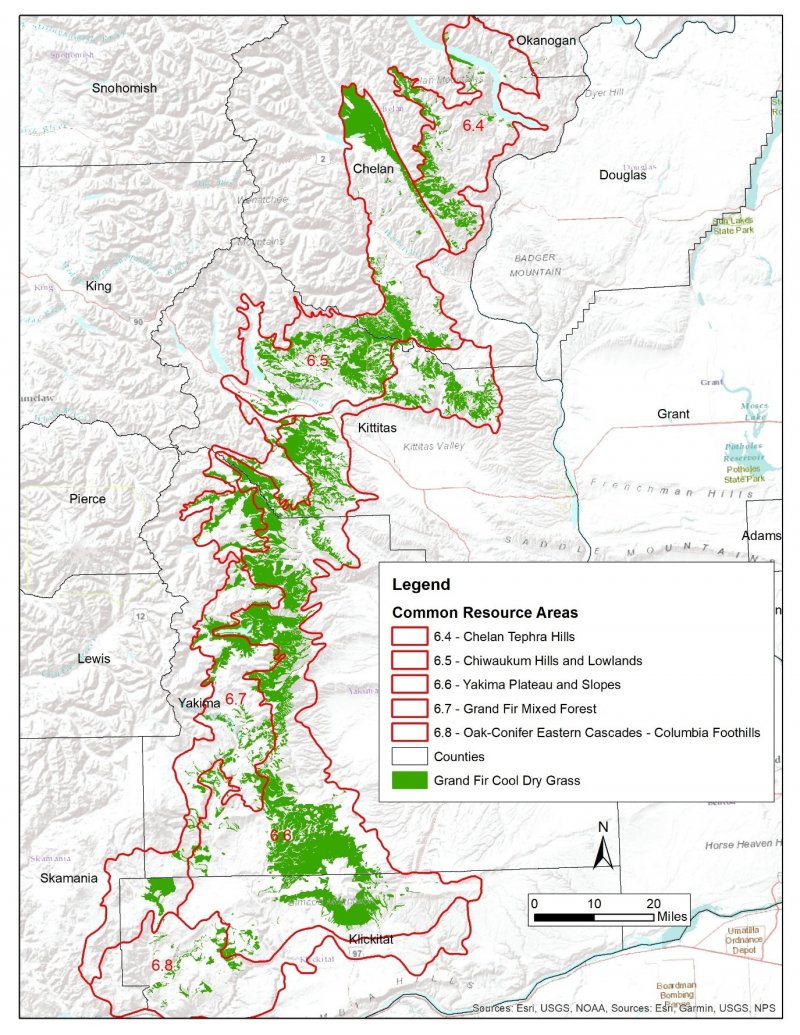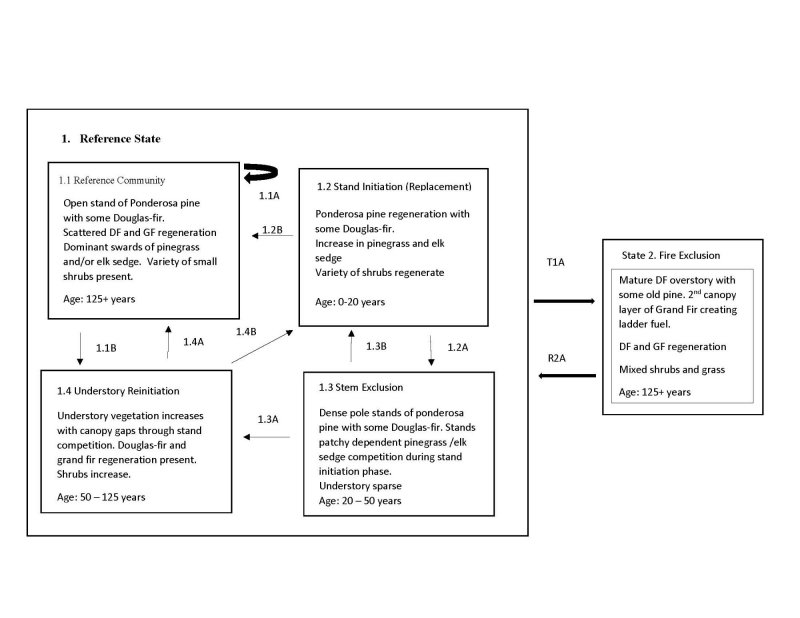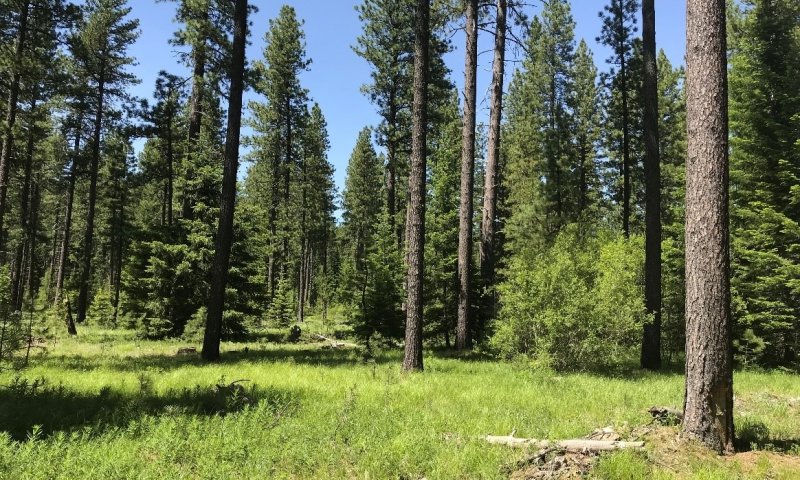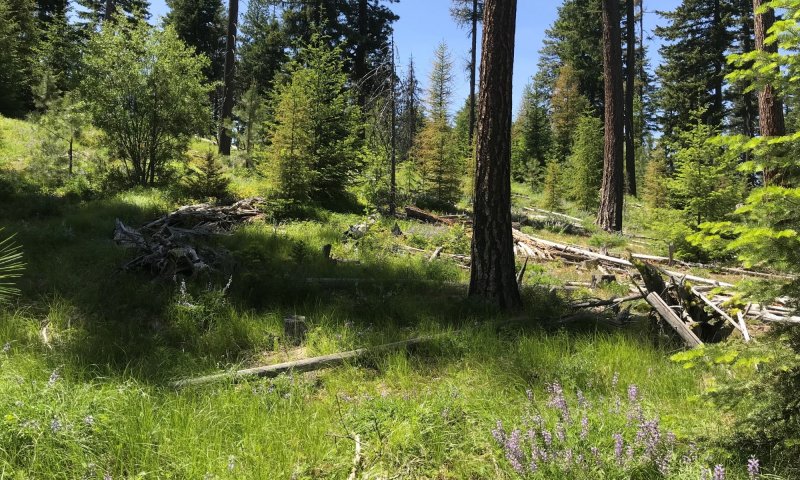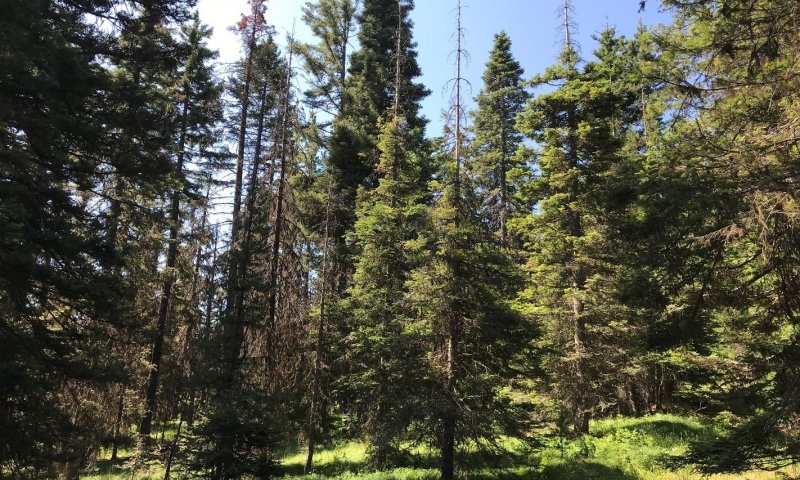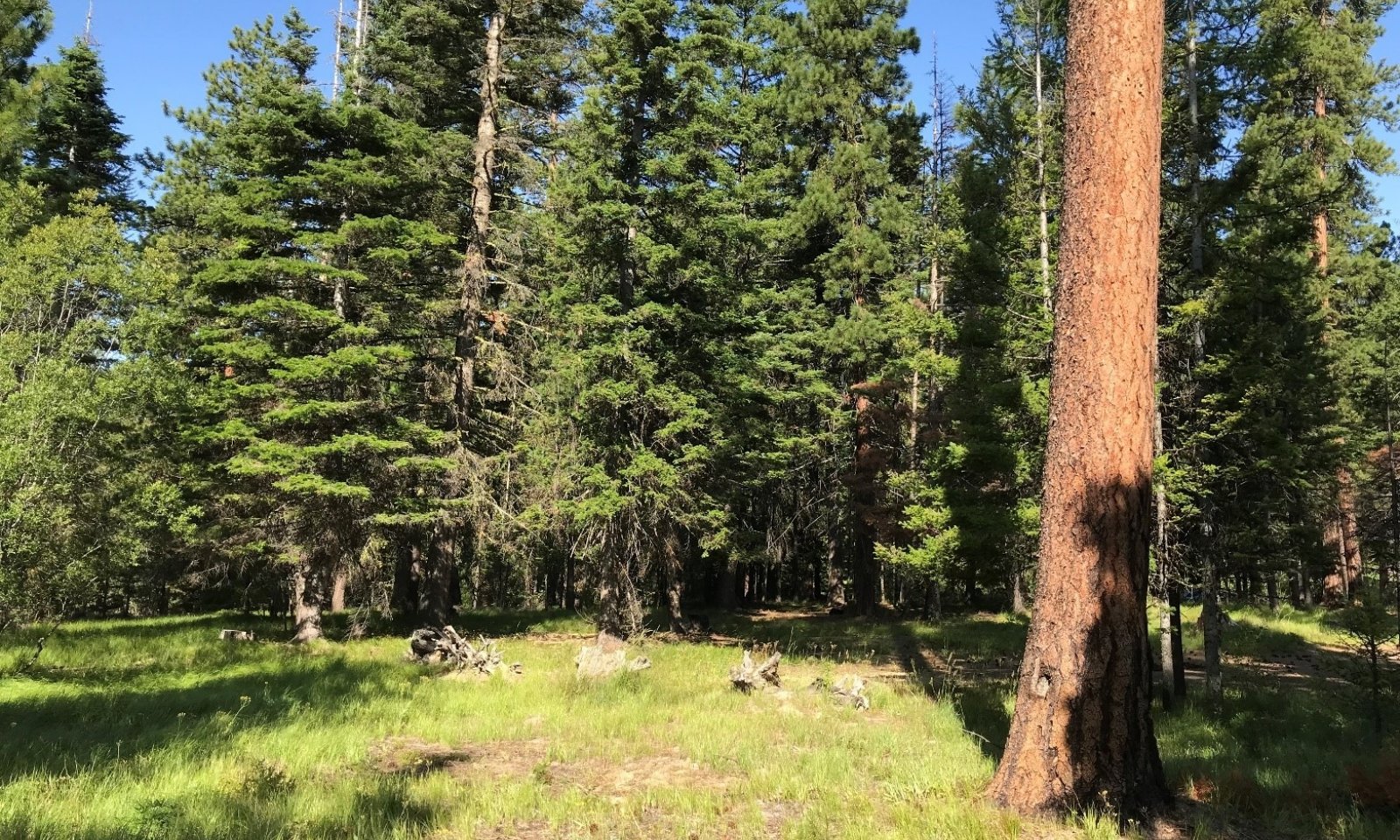

Natural Resources
Conservation Service
Ecological site F006XD002WA
Cool Frigid Xeric Ashy Slopes (Grand fir Cool Dry Grass)
Last updated: 4/01/2025
Accessed: 12/21/2025
General information
Provisional. A provisional ecological site description has undergone quality control and quality assurance review. It contains a working state and transition model and enough information to identify the ecological site.
MLRA notes
Major Land Resource Area (MLRA): 006X–Cascade Mountains, Eastern Slope
Major Land Resource Area (MLRA): 006X–Cascade Mountains, Eastern Slope.
Stretching from northern Washington to southern Oregon, MLRA 6 encompasses the mountain slopes, foothills, elevated plateaus and valleys on the eastern slopes of the Cascade mountains. This MLRA is a transitional area between the Cascade Mountains to the west and the lower lying Columbia Basalt Plateau to the east. Situated in the rain shadow of the Cascade Crest, this MLRA receives less precipitation than portions of the cascades further west and greater precipitation than the basalt plateaus to the east. Geologically, the majority of the MLRA is dominated by Miocene volcanic rocks, while the northern portion is dominated by Pre-Cretaceous metamorphic rocks and the southern portion is blanketed with a thick mantle of ash and pumice from Mount Mazama. The soils in the MLRA dominantly have a mesic, frigid, or cryic soil temperature regime, a xeric soil moisture regime, and mixed or glassy mineralogy. They generally are moderately deep to very deep, well drained, and loamy or ashy. Biologically, the MLRA is dominated by coniferous forest, large expanses of which are dominated by ponderosa pine, Douglas-fir or lodgepole pine. Areas experiencing cooler and moister conditions include grand fir, white fir, and western larch while the highest elevations include pacific silver fir, subalpine fir and whitebark pine. Economically, timber harvest and recreation are important land uses in these forests. Historically, many of these forests would have experienced relatively frequent, low and mixed severity fire favoring the development of mature forests dominated by ponderosa pine or Douglas-fir. In the southern pumice plateau forests, less frequent, higher severity fire was common and promoted the growth of large expanses of lodgepole pine forests.
LRU notes
Common Resource Area (CRA) 6.6 - Yakima Plateau and Slopes
This LRU occurs predominantly on plateaus and slopes of hills and mountains. The soils are dominantly in the Andisols and Inceptisols taxonomic order, with some Alfisols and Mollisols . Soil parent materials are dominantly colluvium and residuum from igneous, sedimentary, and metamorphic rock, glacial outwash, and glacial till, with a mantle or mixture of volcanic ash in the upper part. Taxonomic soil climate is primarily a frigid temperature regime and xeric moisture regime with average annual precipitation of about 30 inches.
Other LRU'S where the site occurs:
CRA 6.4 - Chelan Tephra Hills
CRA 6.5 - Chiwaukum Hills and Lowlands
CRA 6.7 - Grand Fir Mixed Forest
CRA 6.8 - Oak-Conifer Eastern Cascades - Columbia Foothills
Classification relationships
CWG124 - grand fir/pinegrass (modal) (WEN)
CWS336 - grand fir/common snowberry/pinegrass
CWG125 - grand fir/pinegrass-lupine
CWS554 - grand fir/oceanspray/pinegrass
CWS226 - grand fir/Cascade Oregongrape/pinegrass
Ecological site concept
This site combines the grand fir/pinegrass, grand fir/elk sedge and grand fir/snowberry/pinegrass plant associations. It occurs mostly on middle slopes and ridgetops with southern aspects and also, on level terrain in cool air drainages. Elevations ranges from 2000 to 5000 feet. Soils are deep with an ash or mixed ash layer.
Open stands of ponderosa pine and Douglas-fir, with a dominant sward of pinegrass or elk sedge in the understory, are typical of the site. Douglas-fir and grand fir may be present in the understory. A host of shrubs will be mixed in the understory. Western larch is absent from grand fir/pinegrass site due to xeric conditions, however, can be present on the grand fir/elk sedge sites and grand fir/snowberry/pinegrass sites. Lodgepole pine may be present in both.
Associated sites
| F006XB003WA |
Frigid Xeric Mountain Slopes (Grand fir Warm Moderately Dry Low Shrub/Herb) On slightly drier sites. |
|---|---|
| F006XB001WA |
Frigid Xeric Mountain Slopes (Douglas-fir Moderately Dry Shrub/Herb) On slightly warmer, drier sites. |
| F006XD001WA |
Frigid Moist Xeric Ashy Slopes (Grand fir Warm Moist Shrub/Herb) Increase moisture. |
Similar sites
| F006XA001WA |
Cool Frigid Xeric Ashy Slopes (Douglas-fir Cool Dry Grass) On drier sites. |
|---|
Table 1. Dominant plant species
| Tree |
(1) Abies grandis |
|---|---|
| Shrub |
Not specified |
| Herbaceous |
Not specified |
Click on box and path labels to scroll to the respective text.
Ecosystem states
| T1A | - | Prolonged fire exclusion |
|---|---|---|
| R2A | - | Selective removal and prescribed fire |
State 1 submodel, plant communities
| 1.1B | - | Lack of ground fires and periodic mixed severity fires |
|---|---|---|
| 1.2B | - | Time with reoccurring sporadic ground fires |
| 1.2A | - | Long intervals without fire |
| 1.3B | - | Stand killing fires |
| 1.3A | - | Stand competition and mortality |
| 1.4A | - | Time with sporadic mixed severity fires |
| 1.4B | - | Stand replacing fires |
